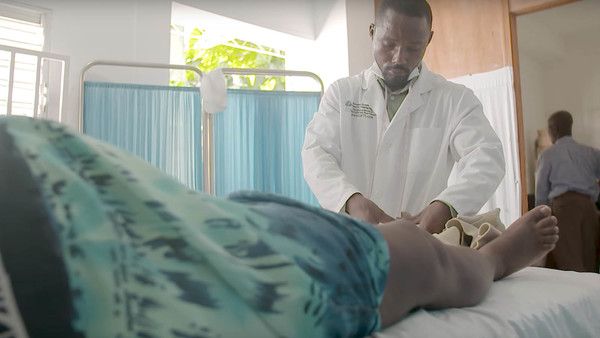Haiti: Notre Dame's Fight to End Lymphatic Filariasis
It’s a little more than an hour by car from the village of Léogâne to the Port-au-Prince office of Dr. Joseline Marhone, Haiti’s director of food and nutrition in the Ministry of Public Health and Population. It’s an instructive ride. The car is ventilated for passengers only by rolling down the windows, and then only when it’s moving, which isn’t as often as those accustomed to milder climates may like. Even in the city, the roads are winding, and the route seems devoid of right angles indeed, of any angles at all. It’s a circuitous route to an unmarked destination. The office itself bears no markings of a government building. It’s literally a cargo container, roughly the size of a small semi-tractor trailer, with a hole cut in the side to accommodate a wall-mounted air conditioning unit, and a door affixed to a cut-out opening at the front.
At the least, it’s an unlikely place for Marhone to wax optimistic about her country’s prospects for dealing with lymphatic filariasis (LF), a cruel and debilitating mosquito-borne disease that has plagued Haiti for generations. Nevertheless, Marhone’s countenance, already bright, gleams when the subject is raised.
Read the story